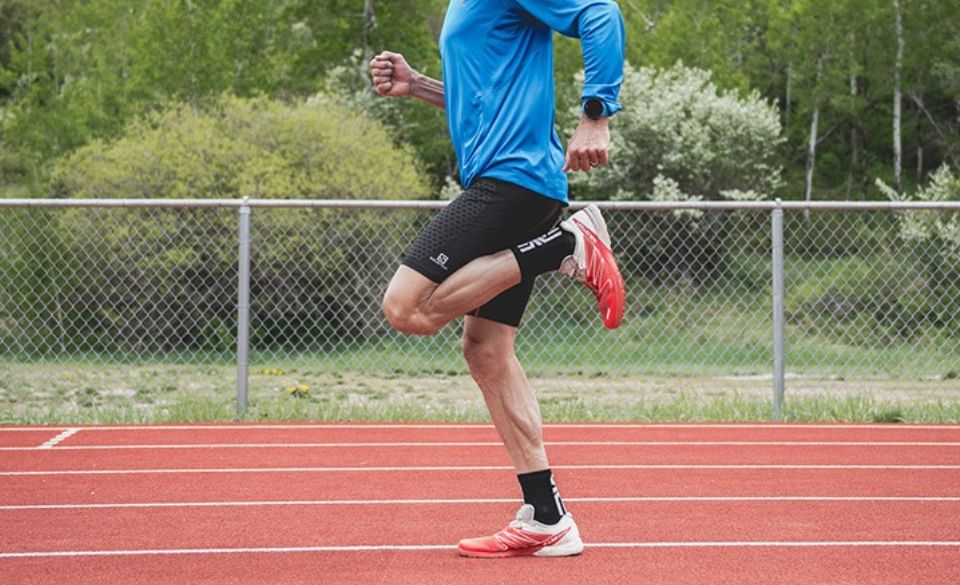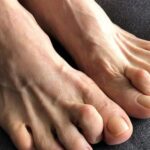
A Complete Guide To The Butt Kicks Exercise
Page Contents
A butt kicks exericse is a cardio exercise that is frequently used as a warm-up since it gradually raises heart rate. It is important for runners who want to lengthen their stride as well. Butt kickers entail kicking your shins back behind you till the bottom of your foot touches your buttocks. The exercise stretches the quadriceps and hip flexors while engaging the hamstrings. Butt kickers are a powerful glute-building exercise that can be performed by people of all fitness levels.
Contrary to what you would believe from Instagram, a workout need not be difficult to be effective. The butt kicks exercise is a plyometric, also known as jump training, that is performed as a dynamic stretch during a warm-up to engage the muscles in the posterior chain, or the rear of your body. They’re excellent for your glutes, hamstrings, quadriceps, and calves. Additionally, this quick-twitch muscle activity necessitates core stability and proper form while moving the upper body.
In this article we will answer the following;
Why Is The Butt Kicks Exercise Good?
What muscles Does The Butt Kicks Exercise Target?
Is The Butt Kicks Exercise Good For Runners?
How To Do The Butt Kicks Exercise?
Why Is The Butt Kicks Exercise Good?
The butt kicks exercise trains your hamstrings to swiftly contract while stretching the front of your thighs, often known as your quads. This movement pattern is essential to having good running form.
These are effective aerobic workouts that use only your own body weight as resistance while strengthening your muscles and increasing your cardiovascular fitness.
What Muscles Does The Butt Kicks Exercise Target?
Hamstrings, core, calves, and glutes are among the muscles worked on during butt kicking exercises.
The hamstrings are in charge of bending the knees so that the foot could touch your butt. When you’re standing on one foot, your body is stabilized and balanced by your core.
When running, the muscles that generate power are the calves. The glutes, sometimes referred to as the gluteus maximus, allow the foot to touch the butt when the leg is bent backwards.
Is The Butt Kicks Exercise Good For Runners?
Butt kicks are regarded as a crucial running exercise for athletes who seek to improve their form, stride efficiency, and injury resistance. In instance, butt kicks might speed up your hamstring contractions, which would enable you to run more quickly.
Butt kicks exercise teaches you to avoid running over your heels and not to overstride. It teaches you to land directly below yourself, which improves your running form. By also maintaining momentum and avoiding the slowdown, you may raise the cadence.
By accelerating the nerve impulses that transmit messages to muscle fibres, butt kicks exercises increase communication between neurones and muscles. Your muscles will be more coordinated as a response, allowing for more intense training or competition.
How To Do The Butt Kicks Exercise?
Butt kicks exercise is essentially running while attempting to contact your glute with your heel with each foot lift, hence the name. To ensure that you have good technique and get the most out of the workout, there are a few adjustments that need to be made.
The following are the essentials for good butt kick form:
1. Utilize your calves and other strong lower body muscles by pushing firmly with your toes and with your torso upright.
2. To maintain your spine firm and supported, squeeze your belly button to your spine.
3. Kick one heel up into your glute while tensing your hamstrings; swing your arms vigorously and deliberately (as if you were running).
4. Repeat swiftly yet carefully from one leg to the next, back and forth.
Although the legs are the primary emphasis of this workout, it’s crucial to keep your body in perfect alignment throughout. If executed improperly, you risk injuring a joint or spraining or straining a muscle.
When performing a butt kick workout, keep the following safety advice in mind:
– Prior to increasing up the speed, start gradually.
– Make sure your chest is open, your spine is neutral, and your core is engaged.
– Land softly, not on your heels, but on the balls of your feet.
– Instead of pushing off the ground, try concentrating more on tightening your hamstring as you elevate your leg.
Once you’ve mastered the motion, you may modify the butt kicks exercise by adding some light weights; we suggest modest weights between 2.5 and 5 lbs. Now that the trunk is rotating more, maintaining stability will be considerably more difficult. This means that your core, especially your obliques, which are in charge of twisting your stomach from side to side, will have to work harder.
Here are a few more modifications to the butt kicks exercise that you may add if you feel comfortable with the aforementioned and desire something more difficult.
High knees
The butt kicks exercise mentioned above can be modified by adding high knees.
1. As a warm-up, begin with 10 butt kick repetitions.
2. Now alternating high knees with butt kicks. Lift your knees as high as you can and sprint on the spot. Make sure you land softly on the balls of your feet while you do this
3. Continue 10-20 reps
4. Alternate between the two approaches while taking a 30-second break.
5. Then, to increase your level of fitness, strive to continue doing things longer.
Moving butt kicks
You will be adjusting the fundamental form in this butt kicks exercise by going forwards.
1. Starting with a butt kick motion, contact the backside with the heel.
2. Step forwards slowly; your step should feel like you are jogging with a high knee motion and your heels should be in contact with your buttocks.
3. To prevent injuries, make sure to land softly on the balls of your feet.
4. Continually advance up to 10 or 20 yards, depending on the available area.
5. Repeat 3-5 times
Glute cable kickback
An ankle cuff-equipped cable machine is required to perform the glute cable kickback exercise.
1. Start with the lowest setting when performing these buttkicks. To align the back with the ground, bend slightly. Hold onto a wall or similar surface for support.
2. Keep your other leg straight and place one leg on the ankle cuff. Activate your core while tightening your glutes.
3. Take the leg as far back as you can while being slow and controlled. After that, progressively revert to your starting position.
4. Perform the necessary number of repetitions on one leg, then switch to the opposite side.


